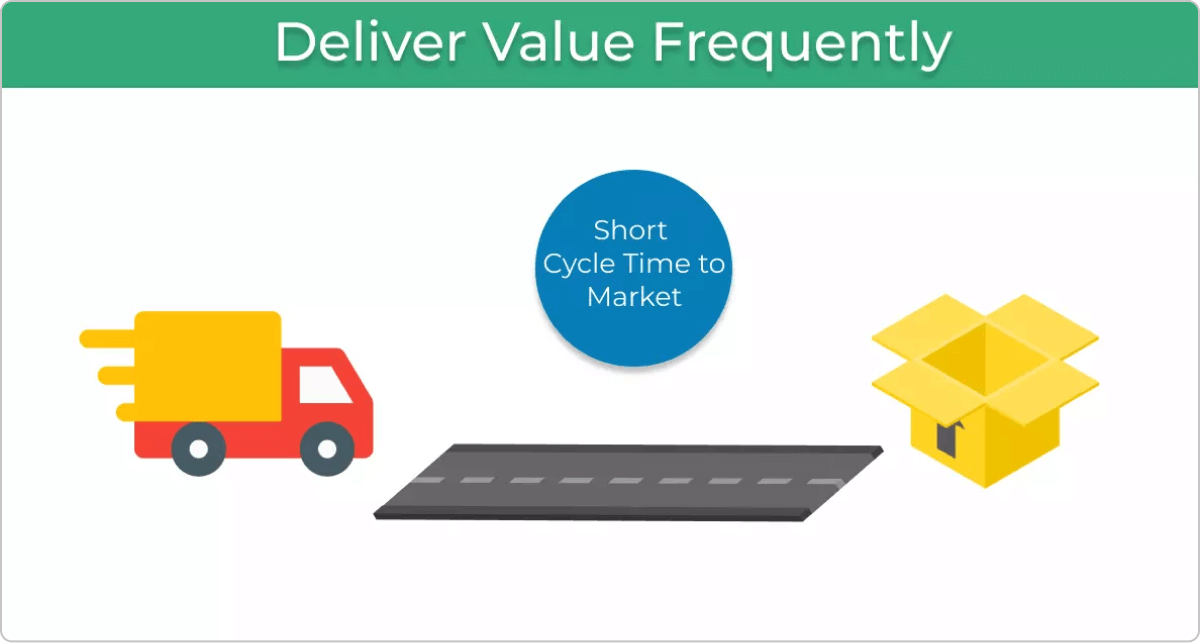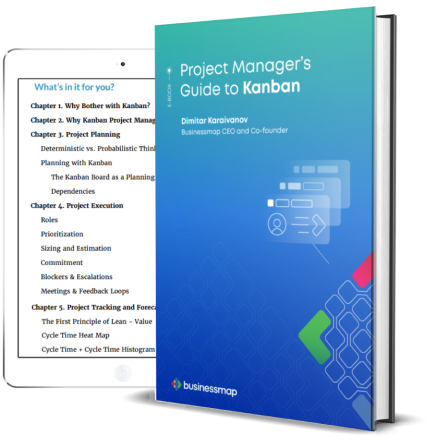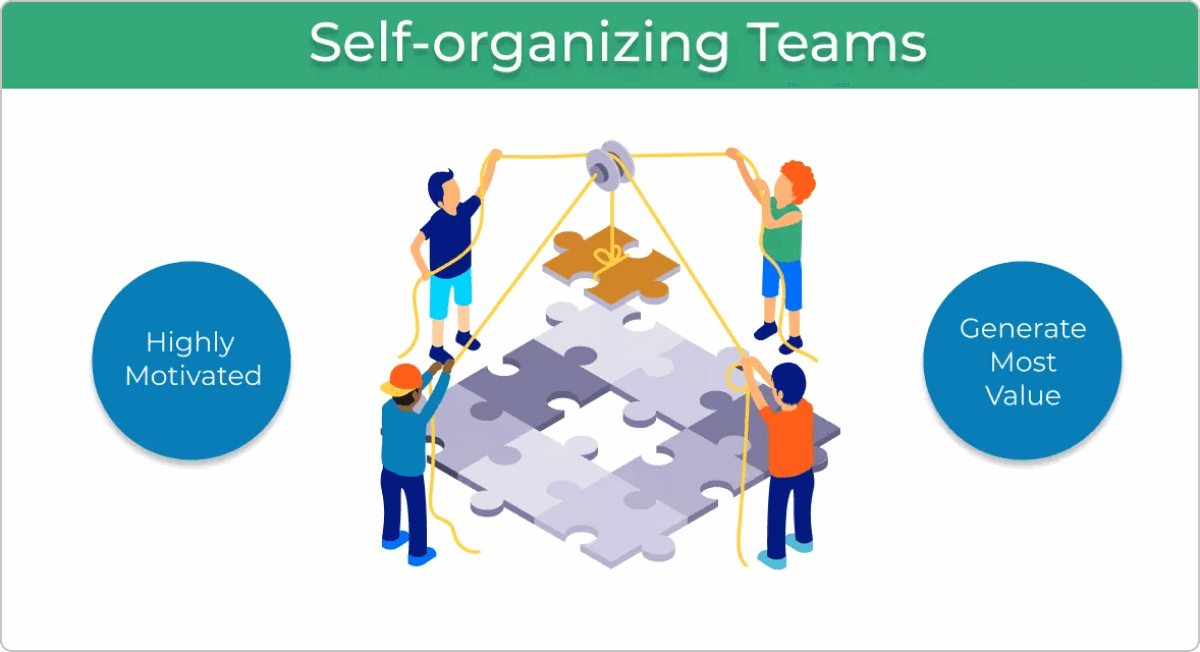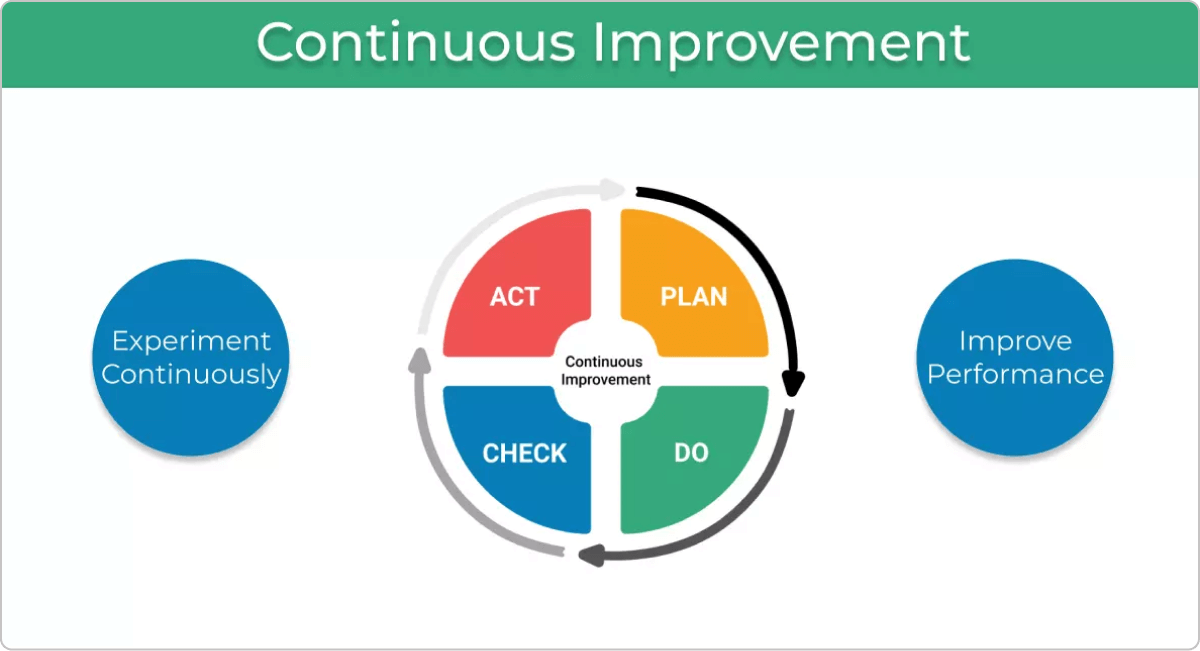According to the PMI Pulse of the Profession annual report, 48% of projects are not finished within the scheduled time, 43% go over their original budget, and 31% of projects don't meet the initial goals and business intent. This doesn't sound very optimistic.
It is obvious that modern project managers are struggling to find the path to success and why more and more of them turn to Agile project management and its core principles.
The 12 Agile Principles
It all began back in 2001 with the Agile Manifesto. There was a need for a new approach that can help organizations be more flexible, responsive, and adaptive to changes.
Frustrated with how things were, Agile's "founding fathers" came up with a manifesto based on 12 principles.
#1 Satisfy Customers Through Early and Continuous Delivery
The original formulation of the first of the Agile principles says, "our highest priority is to satisfy the customer through early and continuous delivery of valuable software". However, it is perfectly applicable in areas outside of software development.
As you can see, customer satisfaction sits on top of the 12 principles. Early and continuous delivery increases the likelihood of meeting customer's demands and contributes to the generation of faster ROI.
By applying this concept, you will increase your process's agility and respond to changes in a timely fashion. On the other hand, your customers will be happier because they will get the value they are paying for more frequently. Also, they will be able to provide you with feedback early on, so you will be able to decrease the likelihood of making significant changes later in the process.
#2 Welcome Changing Requirements Even Late in the Project
Still, if need be, change requests should be most welcome even at the late stages of project execution. The original text of the second of the Agile principles states that your team needs to "welcome changing requirements, even late in development. Agile processes harness change for the customer's competitive advantage".
In traditional project management, any late-stage changes are taken with a grain of salt as this usually means scope creep and thus higher costs. However, Agile teams aim to embrace uncertainty and acknowledge that even a late change can still bear a lot of value to the end customer. Due to the nature of Agile's iterative process, teams shouldn't have a problem responding to those changes in a timely fashion
#3 Deliver Value Frequently
The third Agile project management principle originally states, "deliver working software frequently, from a couple of weeks to a couple of months, with a preference to the shorter timescale". Its prime goal is to reduce the batch sizes that you use to process work.

This principle became necessary due to the extensive amounts of documentation that were part of the planning process in software development at the end of the 20th century. Logically, by taking it to heart, you will reduce the time frame for which you are planning and spend more time working on your projects. In other words, your team will be able to plan in a more agile way.
#4 Break the Silos of Your Project
Agile relies on cross-functional teams to make communication easier between the different stakeholders in the project. As the original text states, "business people and developers must work together daily throughout the project".
In a knowledge work context that is not explicitly related to software development, you can easily change the word "developers" to "engineers" or "designers" or whatever best suits your situation. The goal is to create a synchronization between the people who create value and those who plan or sell it. This way, you can make internal collaboration seamless and improve your process performance.
10 Years Kanban Experience In 1 Free Book.
Project Manager's Guide to Kanban
#5 Build Projects Around Motivated Individuals
The logic behind the fifth of the Agile principles is that by reducing micromanagement and empowering motivated team members, projects will be completed faster and with better quality.
Like the original text following the Agile manifesto states, you need to "build projects around motivated individuals. Give them the environment and support they need, and trust them to get the job done".
The second sentence of this principle is especially important. If you don't trust your team and keep even the tiniest decisions in your company centralized, you will only hinder your team's engagement. As a result, individuals will never feel a sense of belonging to the purpose that a given project is trying to fulfill, and you won't get the most of their potential.
#6 The Most Effective Way of Communication is Face-to-face
"The most efficient and effective method of conveying information to and within a development team is face-to-face conversation."
In 2001, this principle was spot on. By communicating in person, you reduce the time between asking a question and receiving an answer. However, in the modern work environment where teams collaborate across the globe, it provides a severe limitation.

Thankfully, with the development of technology, you can interpret this Agile principle from face-to-face to "synchronous" or otherwise direct communication. So as long as you have a way to quickly reach your team and discuss work matters without bouncing back and forward emails for days, you are good to go.
#7 Working Software is the Primary Measure of Progress
The 7th of the Agile core principles is pretty straight forward. It doesn't matter how many working hours you've invested in your project, how many bugs you managed to fix, or how many lines of code your team has written.
If the result of your work is not the way your customer expects it to be, you are in trouble
#8 Maintain a Sustainable Working Pace
The precise formulation of this principle is "Agile processes promote sustainable development. The sponsors, developers, and users should be able to maintain a constant pace indefinitely."
Logically, when putting Agile to practice, your goal is to avoid overburden and optimize the way you work so you can frequently deliver to the market and respond to change without requiring personal heroics from your team.
#9 Continuous Excellence Enhances Agility
As stated by the Agile Manifesto founders, "continuous attention to technical excellence and good design enhances agility". In a development context, this principle allows teams to create not just working software but also a stable product of high quality.
As a result, changes to the code will be less likely to impact bugs and malfunctions negatively.
Still, the 9th of the Agile management principles is applicable in every industry. When you maintain operational excellence, you will have less trouble reacting to changes and maintaining agility.
#10 Simplicity is Essential
This principle's original content can be a bit confusing as it states, "Simplicity–the art of maximizing the amount of work not done–is essential". Yet, it is very practical.
If you can do something in a simple way, why waste time complicating it? Your customers are not paying for the amount of effort you invest. They are buying a solution to a specific problem that they have. Keep that in mind, when implementing Agile and avoid doing something just for the sake of doing it.
#11 Self-organizing Teams Generate Most Value
Once again, we realize that when provided with freedom, motivated teams generate the most value for the customer. When discussing this principle, the 17 fathers of Agile stated that "the best architectures, requirements, and designs emerge from self-organizing teams".

If you have to push your team and "drive them forward", maybe you are not ready for Agile, or you need to make some changes to your leading style.
#12 Regularly Reflect and Adjust Your Way of Work to Boost Effectiveness
Finally, we've come to the last of the Agile management principles. It is related to evaluating your performance and identifying room for improvement. The long version of the principle states: "At regular intervals, the team reflects on how to become more effective, then tunes and adjusts its behavior accordingly".

With the help of various Agile metrics, you will be able to experiment and improve your performance continuously. If things don't go as you've planned, you can discuss what went wrong and adjust to get back on track.
There are different Agile methods, but Agile itself is not a methodology or a framework. It is a set of values and principles. This is why it is incredibly flexible and can be applied by different organizations. However, to make a successful Agile transformation, you need to have the necessary foundation. Implementing the 12 Agile principles is precisely how you build it.
Good luck!
Businessmap is the most flexible software
to align work with company goals
In Summary
Implementing the 12 principles of Agile will help you build an Agile organization that can help you with:
- Be more flexible so you can adapt to emerging changes in the process
- Reduce the waste in your system so you can make your Agile workflow and final solution more cost-efficient
- Focus on early value delivery in order to get quick feedback from the market but also realize a faster ROI of your product/service
- Create a healthy working environment where everybody feels appreciated and thus better contributes to meeting customer’s requirements













